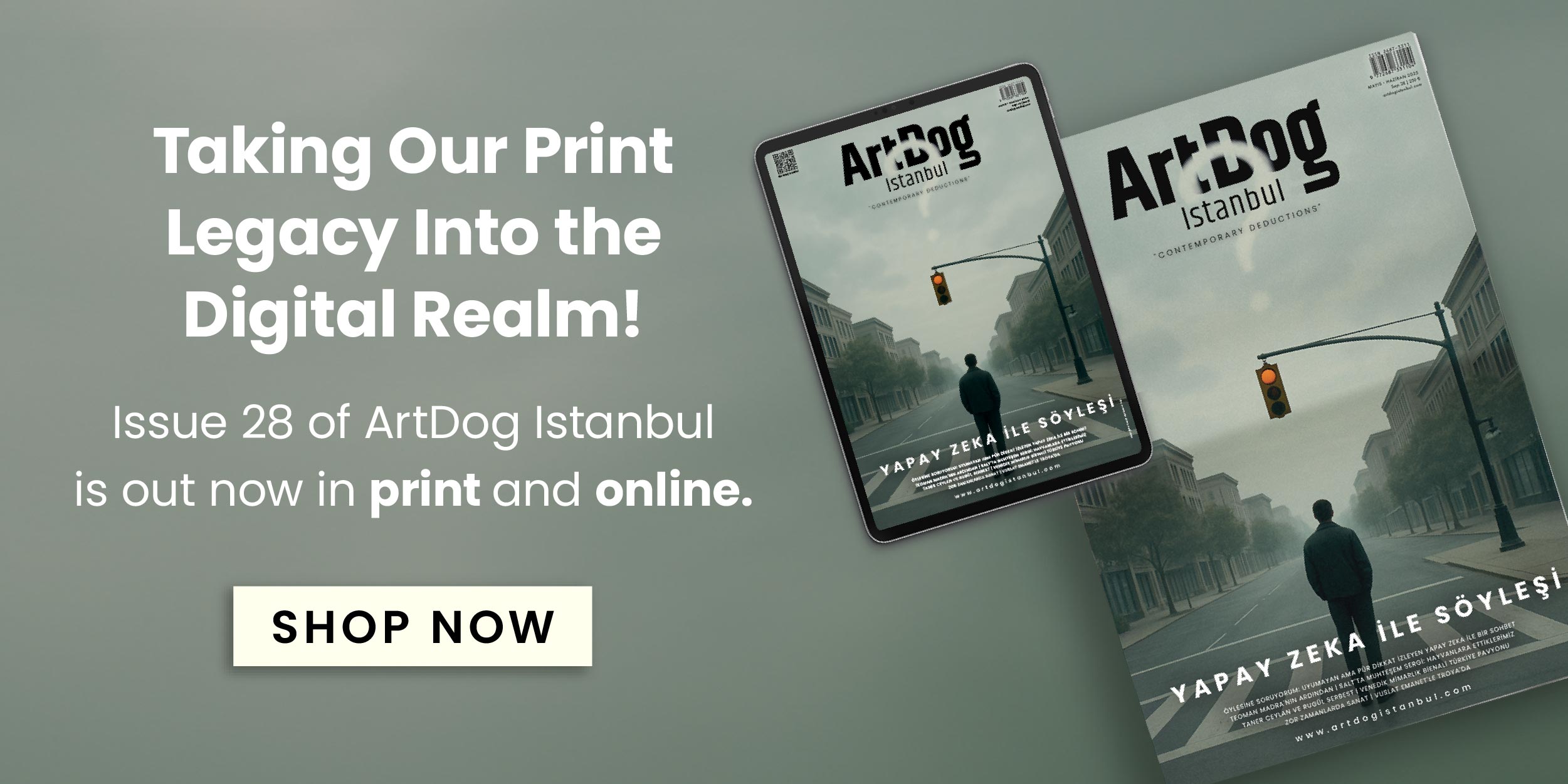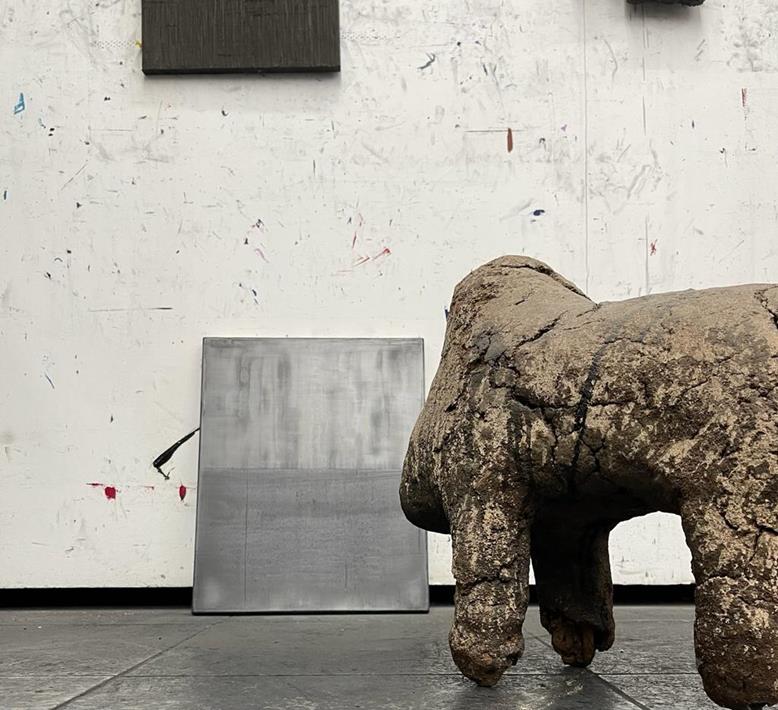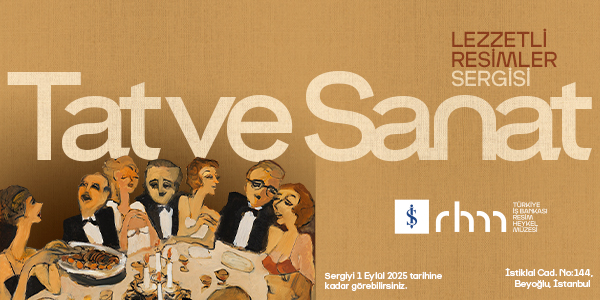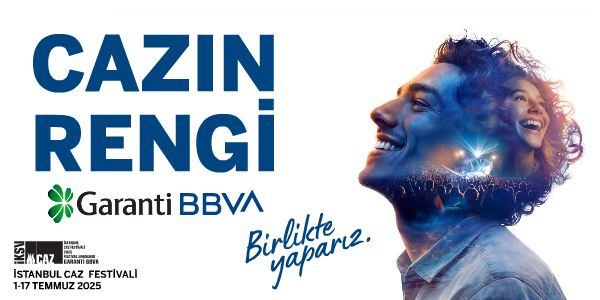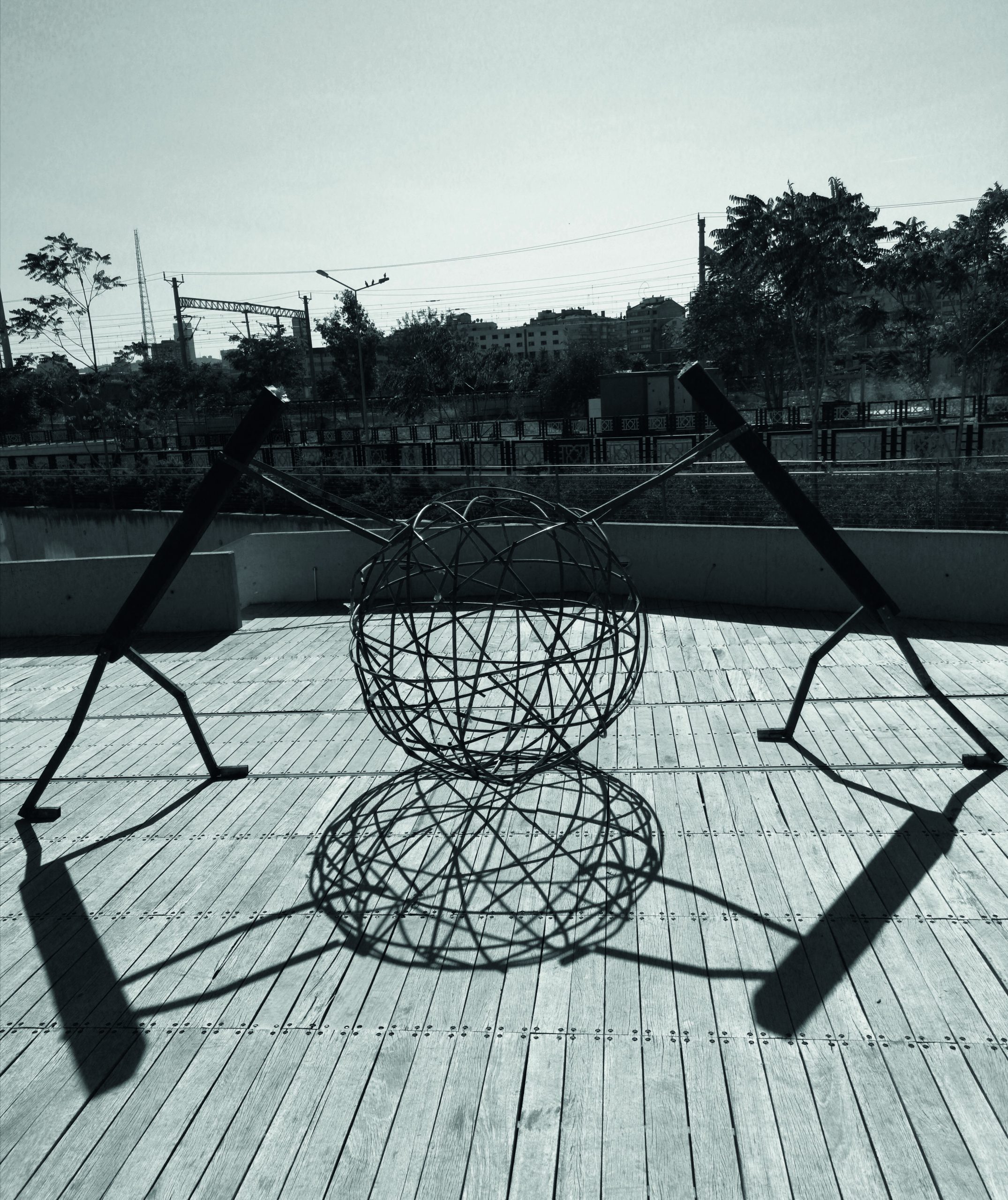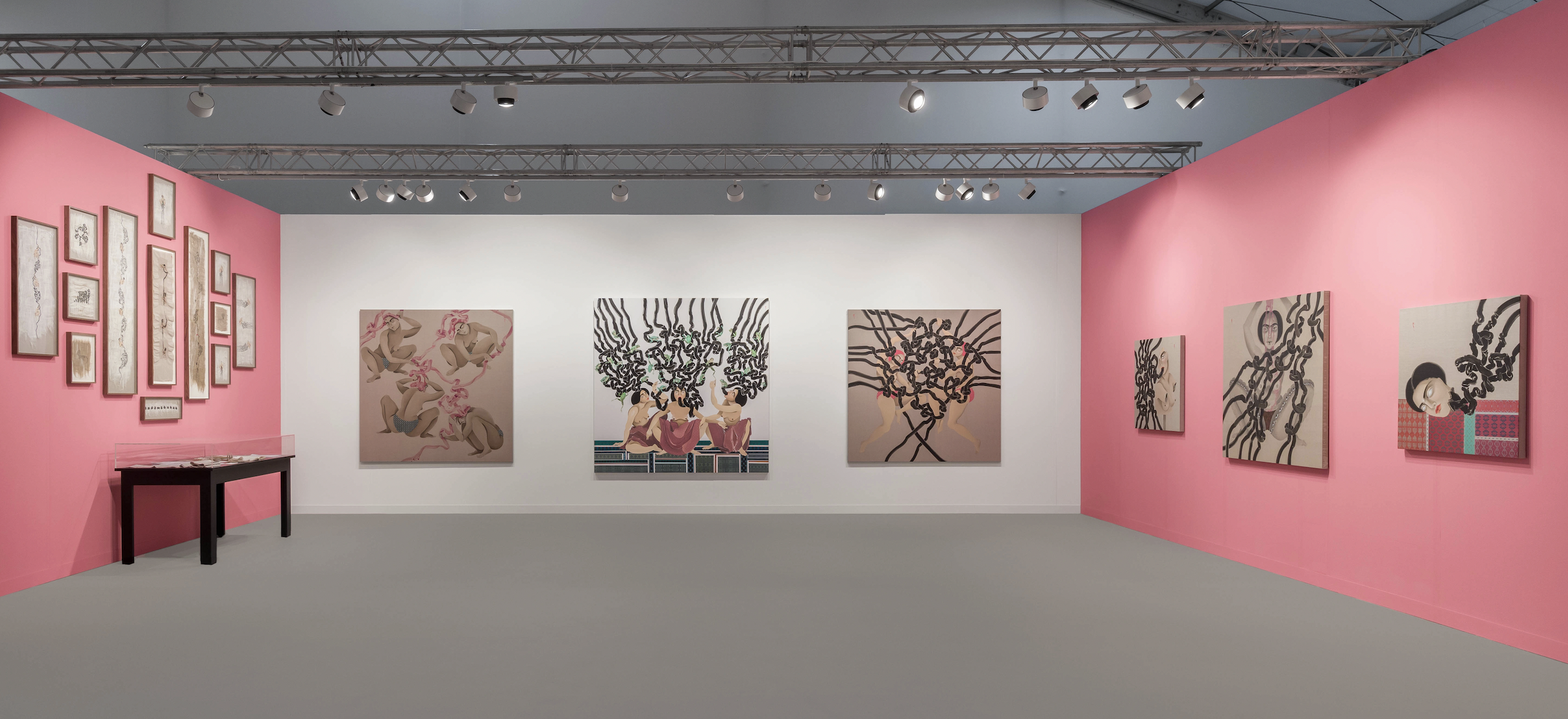FUTUREGARDEN, Kemal Seyhan’s most recent exhibition at Pi Artworks in Istanbul, begins with a question about the relationship between the painting object and the possibilities of space—namely, spatiality in the most abstract sense.
The fact that this question has been asked before in painting, and is often considered one of the fundamental tenets of abstraction, appears here, however, to distract from the particularity of the operation at work in Seyhan’s painting, who is by no means an abstractionist. Images of his work are often deceiving like that. But for a number of years now, the artist has explained to me in his studio, the sharp distinction between painting and production of images. Gazing at these dark paintings, black on gray or black, superimposed on each other, in an architectural set-up that resembles cubist or post-impressionist compositions.

But the emphasis on material, on surface, and on tangible traces, reveals something other than an intellectual configuration: Emplaced with each other sculpturally, these untitled paintings are integrated seamlessly on the white walls of the gallery in such a way that the distinction between the object and the room are blurred. In order to understand what is really happening here, you need to take a closer look. The outer layer of paint, however thick, is only a patina effect on the surface that covers up a pictorial palimpsest—a number of paintings from the last decade, often executed in colorful palettes, have been meticulously painted over by the artist. In this process, he is not trying to hide their material history, but rather the opposite; it is brought into relief in sharper edges, in the way that an archaeologist is burying back artifacts from an excavation into the site again, in order to reconstruct the context.

The context however is not anything like an original painting, for there is not one starting point in these works, but many. Context is here not the history of painting as a chronology of movements and styles, but history as the experience of time. The time Seyhan refers to here is not the measurable clock time between cycles of labor and sleep, but the cumulative traces of past historical images assembled in simultaneity, and often in discontinuity. When this simultaneity that is pure time is put to the narrative test of description, the viewer realizes, to his despair, that the whole enterprise has collapsed, and only mismatched fragments remain. This is exactly the place where Kemal Seyhan’s idea of temporality—the effect of time, becomes identical with nothingness, with ephemerality and transience. But could it be precisely what he is seeking? From the very beginning, Kemal Seyhan has sought to destroy painting.
And in order to replace it with what and why? This question brings us finally to the different starting points of FUTUREGARDEN. The first starting point: A decade ago, on the Schadekgasse 6, in Vienna’s 6th district, sit a café founded by gallerist and curator Amer Abbas, the FUTUREGARDEN (which gives title to the exhibition), from the windows of which one can take a glimpse into the infamous Flak tower, build at the height of World War II, as a monument to nationalism. On top of the tower, stood since 1991 an artwork by Lawrence Weiner with the inscription “Smashed to Pieces (in the Still of the Night)”. It is right here that Seyhan begins to work on a number of sketches retracing the very beginning of his painting work, which now refers us to the second point: A group exhibition in 1993, at the Michaelerkirche, one of the oldest churches in Vienna, when he began to work on sculptural juxtapositions at painting.

At the invitation of the theological and curator Friedhelm Mennekes, Seyhan was commissioned to cover two 18th century paintings on the main altar of the church. Two colorful vertical canvases of his, in fact, covered the earlier artworks so well that in the eyes of many observers, the works merged completely with the architecture of the church. In the work of Mennekes, whose collaborations with many artists at the Sankt Peter cathedral in Cologne are legendary, transparency, pure space and the participation of viewers into empty space, created an additional, emotional component to spatiality that lies beyond the architectural topography. Throughout the years, this exhibition at Michaelerkirche, carried heavy weight for Seyhan, as an intervention in the art historical space for Europe, by an outsider to the Christian tradition, an artist from Turkey, whose primary visual and emotional landscape was largely different.
And this is precisely the third point: In order to arrive at the destruction of painting, at the nothingness of art as emptiness (inside of the space), or deconstruction, Kemal Seyhan did not have to destroy the entirety of an art history to which he didn’t belong anyway. For him, growing up in the barren plains of central Anatolia, emptiness was already a primary color, therefore the destruction of the artwork was already a native language. As a young man, the long journeys between his home city of Kayseri and the capital Ankara, revealed a monotonous landscape, heavily altered by human hand, and purged from historical references by the violence of a young nation state, blurring the distinction between nature and culture. Once he began painting, nothing had to be destroyed anymore—emptiness was already permanent. Perhaps he listened to Lawrence Weiner after all and smashed his paintings to pieces, by himself, in the still of the night…

